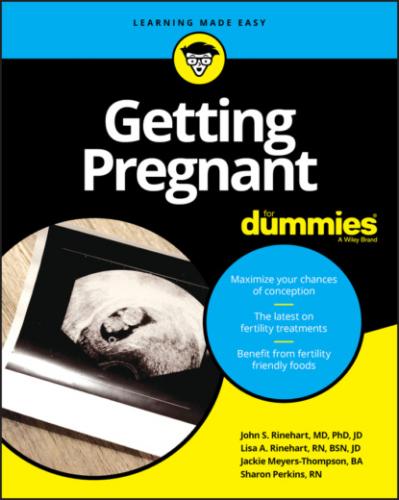The ovaries
Most women have two ovaries, which contain the most important accessory of all — eggs! How many eggs? Less every year, since every day of your life, eggs are lost through atresia, which means that they die off because they’re not being stimulated to mature. For example:
Before birth, a girl fetus’s ovaries contain around 6 to 7 million eggs. The production of eggs stops when the fetus is near five months.
A newborn baby girl’s ovaries contain about 2 to 3 million eggs.
By puberty, only 300,000 to 400,000 eggs remain.
Every month, 500 to 1,000 eggs are recruited from the resting pool and start down the path to maturity where they are capable of creating a normal embryo. This path takes over five months, and many eggs are killed by the ovary along the way. When a woman starts her period only about 20 to 30 remain, and in the next two weeks only one will emerge as the best egg. This egg is the one that is ovulated.
By a woman’s late 30s, only 25,000 or so eggs remain.
By age 50, only 1,000 or so eggs remain, and many are chromosomally abnormal because of the impact of aging on egg quality.
The eggs
You may wonder what eggs contain to make them into your potential screaming newborn. The answer is chromosomes — 23 chromosomes, to be exact. Each chromosome contains the genes that determine whether your baby is tall or short, blond or brunette, and, to some extent, fat or thin. The egg also contains considerable machinery necessary to mix the male and female chromosomes and then divide the chromosomes into the correct number for each daughter cell that results from the first cell division that the fertilized egg undergoes.
Each month, one egg is released from one of your ovaries. The decision about which one ovulates (right or left) is random; they do not necessarily alternate. If you have only one ovary, either because you were born that way or because one was surgically removed, your one ovary generally takes over egg making each month so that you still ovulate each month.
The fallopian tubes
You should have two fallopian tubes, one near each ovary. Tubes are kind of like a pickup bar — a place where sperm and egg should meet and, it is hoped, go on to create something bigger and better: a baby! When an egg is released from the ovary, little projections called fimbriae on the end of the tube move back and forth to “entice” the egg into the tube. Once in the fallopian tube, the egg needs a few days to shimmy down to the uterus. One hopes along the way it meets Mr. Sperm and fertilizes, thereby transforming into an embryo by the time it reaches the uterus. Damaged tubes, usually damaged from infection but sometimes from endometriosis or surgery, are a very common cause of infertility. We talk about this in depth in Chapter 11.
The breasts
Breasts aren’t necessary for getting pregnant; women who have had breasts removed can get pregnant. The normal number of breasts, of course, is two. Nipples are a different matter. As many as 1 in 20 people have more than two nipples. The extras may be nothing more than reddish brown, rough pieces of skin, often found in line with the main nipples. Check yourself out!
Controlling your hormones
You can have all the reproductive organs you need, all in perfect order, and still have no chance of getting pregnant. You can’t get pregnant unless your organs are all synchronized to produce an egg and prepare a proper “landing spot” for it in the uterus at the proper time. What you need to orchestrate the process are hormones, which are chemical substances released from one part of the body that cause a reaction in another part of the body.
The three female hormone-control systems that work together to orchestrate your menstrual cycle are
The hypothalamus: The small structure in the middle of the brain that regulates the nervous and endocrine systems, as well as body weight and temperature.
The pituitary: An endocrine gland at the base of the brain below the hypothalamus that secretes several hormones, including follicle stimulating hormone (FSH) and luteinizing hormone (LH), which are critical for reproduction. The pituitary gland used to be called the “master gland” as it plays a large role in controlling functions of the endocrine systems, adrenal glands, ovaries, and testes.
The ovary: The female reproductive organ that produces estrogen, progesterone, and eggs.
These three hormone systems work together in a feedback system called the hypothalamus-pituitary-ovarian axis, which simply means that they function together to produce a seamless masterpiece — your menstrual cycle.
The main female hormones are:
Estrogen (E2)
Luteinizing hormone (LH)
Follicle-stimulating hormone (FSH)
Progesterone (P4)
In Sync: How Female Reproductive Parts Work Together
All the components of your reproductive tract — the vagina, uterus, ovaries, fallopian tubes, and the glands that orchestrate your hormones — have to work together perfectly for you to be able to get pregnant. (Yes, you need sperm, too, but we get to that in a later section, “Hanging Out with the Guys.”)
Although your menstrual cycle seems simple enough, a lot of things, unfortunately, can go wrong. We not only address how your cycle works but also how it may not work in the next few sections.
Taking a spin on the menstrual cycle
The hormone-secreting systems work to create your menstrual cycle like this:
1 Menstrual Phase: During menstruation, the old uterine lining breaks down and
